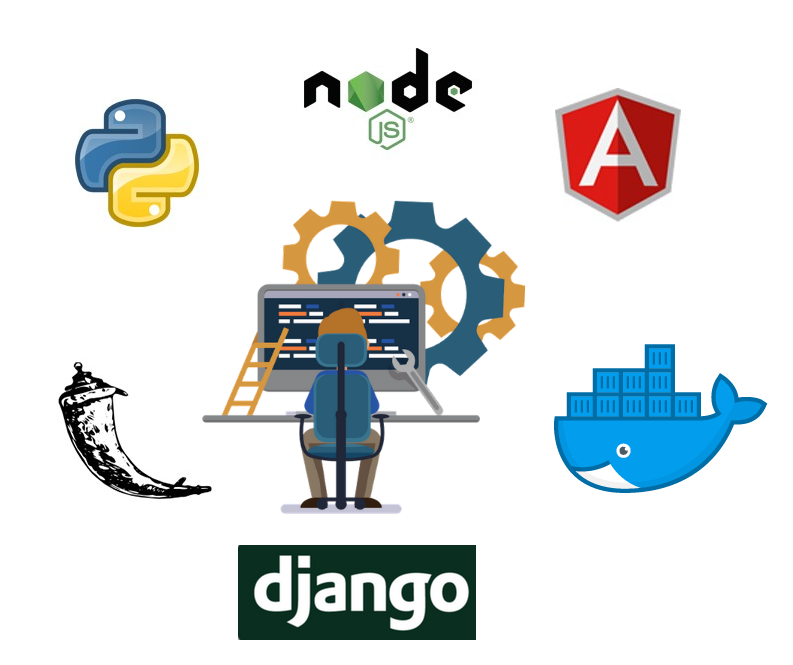How to build a tech startup?
Grzegorz Papaj , 30 December 2020

The first steps in the product building process should be taken carefully. No matter how you prepare yourself at the conceptual stage, you never quite know how your product will work. You also do not know how it will be received by the market. The creation of the final product should be preceded by a prototype or MVP. Through such a solution, an initial product will give you valuable feedback from first users, and perhaps you will save more money to change the concept. Building an innovative solution is not a simple task. It involves a lot of work, and even sometimes going back a few steps. Be open-minded and think outside the box. As long as there are no clear indications that the business concept works, try to be flexible about the product.
Product definition
A startup owner should have the ability to correctly define its product, and in particular to clearly define what value it offers. At this point, it is wise to write down the most important assumptions of the product, such as a short description, the value proposition, and the main features.
Define a product
Take care that the product value is the most important element. It is the core of the product and cannot be forgotten. Thinking too early about less important elements (such as names or logos), while the core of the product is not yet well developed is quite a common mistake.
Keep thinking about value and plan further aspects. After all, it is the core of the final product. When the value is well defined, the remaining components will be much easier to develop.
Remember to not go too far in expanding your product capabilities. It isn’t the right time yet. It’s a good thing only when the product can be integrated with the various available services. But as long as integration is not a key value of the product, do not think about it. Now is the right time to build a product.
Business verification
Once the definition of the product is established, it’s time for verification. It pays to not forget that it is still a verification of pure concept. We won’t intentionally mention various techniques (such as SWOT analysis) that can be read about in specialized textbooks. Here we want to focus on a few basic aspects that, in our opinion, are often insufficiently thought out.
To get started, ask yourself some basic questions::
Who is the target group of the product? - Try to define this group as narrowly as possible. If the product is for everyone, think about who will get it first.
Why would the user want to opt for the product? - In other words, what is its value, especially in the context of the target group.
What is the estimated number of users/customers? - The more precisely defined the target group, the easier it will be to determine its population size. Bear in mind that not everyone in this group will be interested in the product. It would be considered a real success if 10% of the potential customers would provide information about the product, and every tenth of them actually show interest.
What will the main marketing channels be? - Do not assume that the product will sell itself. This thinking is another often repeated myth. Think carefully about ways to reach out to potential clients. Nowadays, Internet advertising is a very broad topic that can take many different forms. Consider the amount of budget that can be spent on advertising. Bear in mind that the amount spent on marketing may be similar to that spent on the creation process of the product.
How will the product pay for itself? - Will the customer pay for the product? Or maybe the product will be free but have some premium services. How much should each client be expected to pay? How much will the customer be willing to pay for the value offered by the product?
Are the expected revenues likely to cover the implementation costs? - Surprisingly, some novice startup owners ignore such an important issue. Answers to previous questions can help to estimate the profitability of the product.
When can initial income and return on investment be expected? - These are equally important questions. In the vast majority of cases, launching one’s own business means resigning from one’s current job. Can most afford to not have an income for so long?

The above points are the basis for the business analysis of the planned product and it is worth paying attention to them. There is no room for excessive optimism because it can take revenge cruelly. And again - it is worth writing down all the answers and any additional thoughts. They can be extremely useful in the eventual creation of a business plan, submitting applications for funding, or communication with potential investors.
Don't forget to evaluate the competition. Think about how the product innovates and whether this innovation already exists? Or maybe one of the well-established businesses in the market could easily expand and compete with the product? Why would the product be better than the one proposed by the competition? Will this difference in value be incentive enough to tip the scales?
Competition is not everything. It is also worth looking at the product more broadly. What place will it find in the existing market’s ecosystem? Are there any complementary solutions, i.e. all products and services that can be used with the product? Such natural allies have the potential to function as a marketing medium or investor.
Monetization is another potential aspect that should be widely considered. Of course, there are products that hit the market first, attract many users, and only later develop a model for monetizing. But only investors with the richest portfolios can afford to conquer the market first. Most startups need to think about monetization right from the get go.
It is wise to plan more than one method of monetization. There might be a need to change the initial one during startup development, or the product might be innovative enough to earn money in a much different way than initially anticipated.

Technical verification
When it comes to tech startups, verifying if there is a technology that can produce the desired product is very important. After a short conversation with an engineer in the appropriate specialization, it may turn out that currently there isn’t a technology that satisfies the criteria for product development. It might also involve, on the other hand, a lengthy analysis, which may be a significant cost.
In the case of software solutions, it is much easier generally. The first step of production may be a deep analysis, sometimes supported by the creation of a simple prototype system, called a proof of concept (POC). Although not necessarily must such a prototype be successful in the first attempt.
When projects are based on innovative hardware solutions, building a PoC can take many months of work by a team of engineers with various specializations and can include subsequent prototypes.
Prototyping in both software and hardware domains has one thing in common. Be prepared for surprises and unexpected difficulties. The more innovative the solution, the longer its implementation may turn out to be. Unfortunately, it cannot be ruled out that the idea may turn out to be impossible to build for unforeseen reasons.
Mockups
Below are mentioned and described elements of the product technical verification that already mean significant costs. Fortunately, mockups are a less expensive way to verify some of the ideas.
Mockups vary in form and scope. In some situations, a series of drawings made in a notebook is sufficient. In others, the mockup is a page or a simple clickable application. The mockup can be very schematic or it can be a faithful representation of the target product interface.
The simplest mockups can be put together without professional assistance using popular tools, for example, a spreadsheet). More advanced mockups may require dedicated software (free or paid) or involve a specialist. The choice of the mockup implementation method should depend on the nature of the application it represents.

Choosing a technology
In the case of a tech startup, choosing a technology to implement products is crucial, but not most important. We mention this because startup owners, often without technical experience, put too much emphasis on the selection of the optimal technology for the project.
Of course, it isn’t a bad thing that startup owners who create technological products are interested in technical details. This kind of engagement is even advisable but with a healthy attitude because the product can probably be equally well implemented in many different technologies. On the other hand, non-technical issues that may affect the development of the business become more important. However, they are often forgotten, leading to subjective opinions or the fashion that is also present in programming.

Modern or stable?
Often there arises the zeal to implement the most modern of solutions in the newest of available technology. Although, of course, there are times when such a decision is justifiable, but one must count the cost.
First of all, the most modern programming languages, platforms or frameworks are too often not mature enough. This means that they have less than the best documentation and a small ecosystem in the form of ready-made libraries, modules or tools supporting the development process. Moreover, they are subject to frequent changes, which may necessitate frequent updates and affect maintenance costs. Additionally, it is difficult to find developers who have extensive experience in these kinds of technologies. And although there are many people willing to explore them, no one knows if fashion trends will change soon and a given technology will be forgotten.
On the other hand, there are many mature technologies with a long history and a large library base. But here too, there are some dangers. Some technologies remain on the market only because systems implemented in them remain in use, but no upgrades are created. There is a clearly noticeable growing number of developers who are more interested in newer solutions that are often more pleasant to use and present greater prospects for working on interesting projects.
Usually, the safest solution for a startup is the implementation of a project in one of the most popular technologies at the time. Thanks to this, it is possible to gain access to a large number of potential contractors and, at the same time, such a company can trust that the popularity of the chosen language or framework will not fade after two or three years.
Fast or flexible?
Another aspect worth considering is a feature sometimes referred to as the "lightness" or "agility" of a programming language. As a result of this feature, some languages facilitate faster solutions than others. This factor is extremely important for startups because they have to take into account the possible necessity to rebuild their product or to make conceptual changes, as well as to react to the opinions of pilot users.
On the other hand, there are a bit more “heavy” (i.e. slower to build) technologies offering greater efficiency and speed of operation. However, the argument about efficiency rarely addresses startups, because such businesses firstly have to win customers/users, and then can think about optimization.
In the dispute between agile development and efficient technologies, we strongly advise you to lean towards agile development. Every startup needs quick results, quick MVP, and quick market verification. Optimization is a requirement that may arise later. If it goes well, there will also be resources to improve or even rewrite the system. If it goes poorly, optimization won't be needed.
Rely on experts
It is understandable that you may have concerns and doubts about the choice of technology. After all, no one wants the project’s failure because of a bad decision. So, if you do not have the technological experience, it is best to rely on experts in this topic.